Skinks as Pets: What you Need To Know Before You Adopt
- Home
- Best Pet for Me
- Skinks as Pets: What you Need To Know Before You Adopt
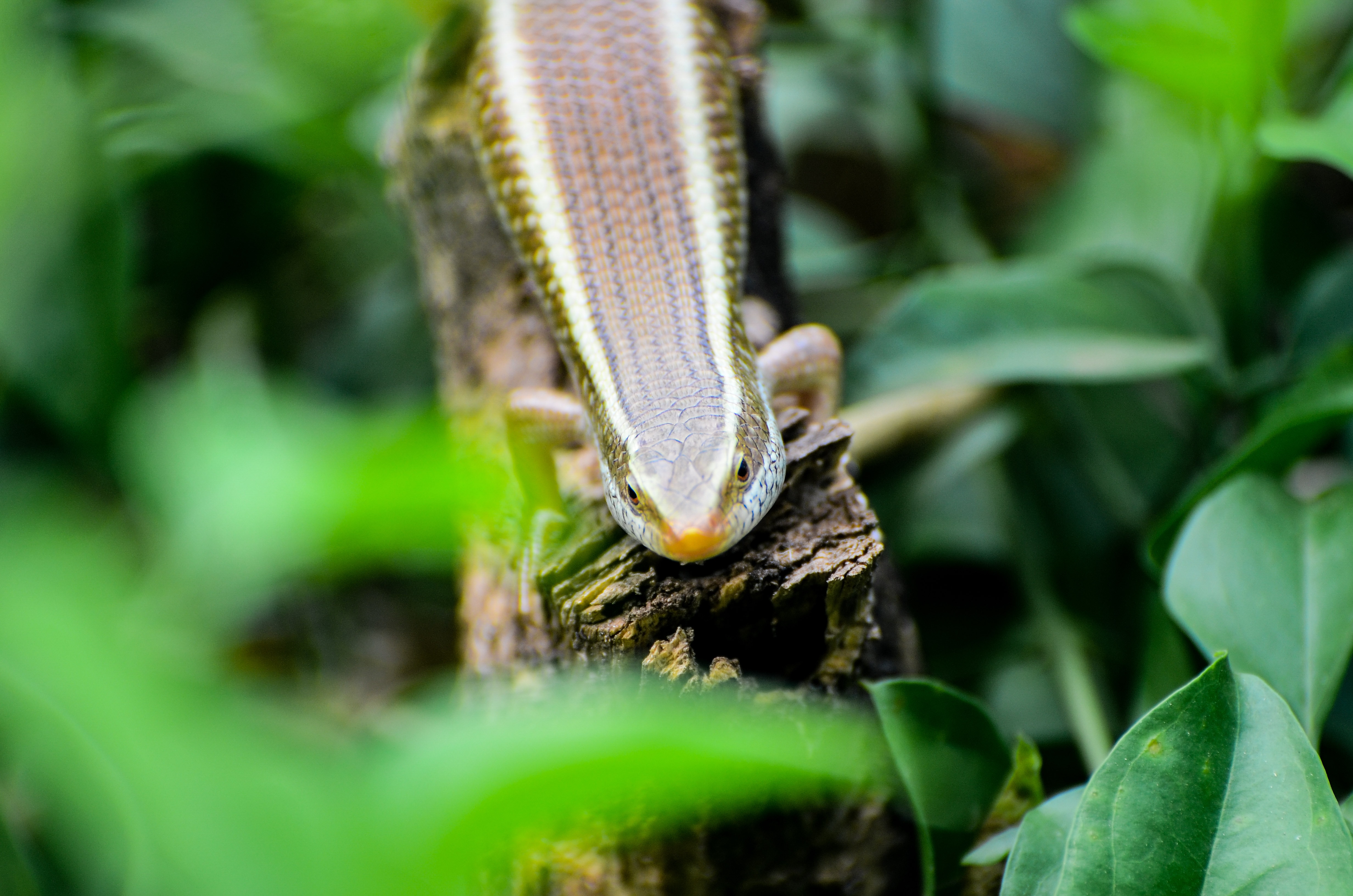 Photo by Ram Kumar https://unsplash.com/photos/brown-and-black-moth-caterpillar-on-brown-wood-UCx_EqQgbU8
Photo by Ram Kumar https://unsplash.com/photos/brown-and-black-moth-caterpillar-on-brown-wood-UCx_EqQgbU8Skinks as pets can make fascinating and low-maintenance companions for reptile lovers.
While blue-tongued skinks are the most popular choice, there are other skinks you might find at reptile rescues or pet stores, each with unique traits and needs.
In this guide, I'll be discussing seven different types of skinks that you may come across as a pet.
To create a great environment for your skink, it’s important to understand their natural habitat and replicate it as closely as possible in your home.
Since skinks come from various regions around the world, their care requirements can differ.
What works well for one species might not be suitable for another, so it’s essential to research each type’s specific needs.
Some skinks, for example, come from arid deserts, while others are native to tropical forests, which means their temperature, humidity, and space requirements will vary greatly.
Understanding where your skink comes from is the key to providing a healthy and comfortable home for them.
Are Skinks Dangerous to People?
Skinks as pets can be a great choice for reptile enthusiasts looking for a unique and engaging companion.
These reptiles come in a wide variety of species, and while the blue-tongued skink is the most popular, there are many other fascinating types you might find at reptile rescues or pet stores.
From their distinctive appearance to their interesting behaviors, skinks can be a fun and rewarding pet.
In this guide, we'll explore seven different types of skinks you may encounter and how to care for them properly.
While skinks are generally docile, it's important to remember that some species can be venomous.
However, don’t let that scare you – skinks only bite when they feel threatened or scared.
The venom they produce isn’t harmful to humans, and they rarely bite unless they feel cornered or provoked.
Most skinks are quite tame and can even be handled with ease once they trust their owners.
As with all pets, patience and proper care will ensure your skink feels safe and comfortable, reducing the likelihood of defensive behavior.
Do Different Skink Species Like People?
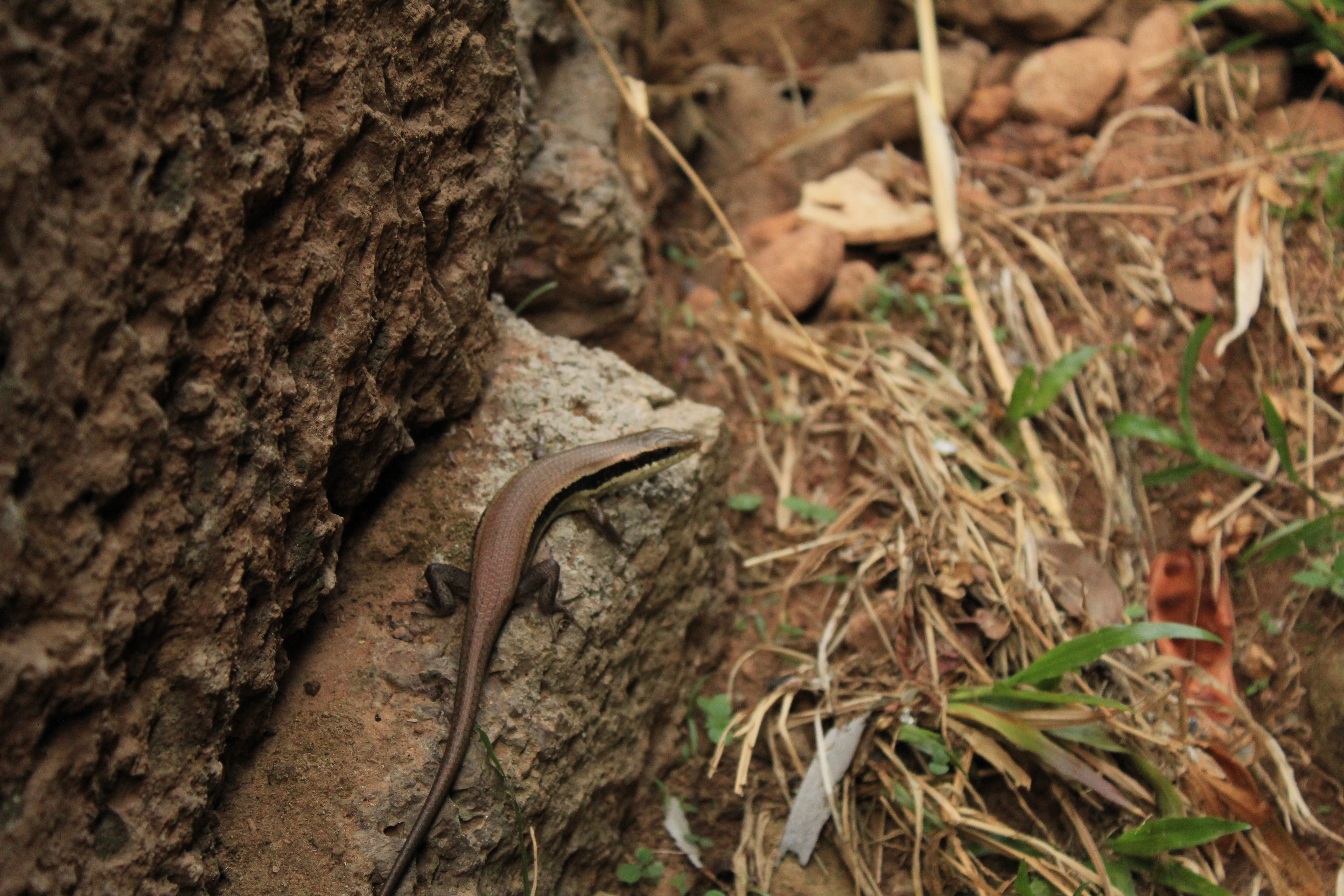 Photo by Bram Wouters https://unsplash.com/photos/brown-lizard-on-brown-rock-EaIYWvA0nR8
Photo by Bram Wouters https://unsplash.com/photos/brown-lizard-on-brown-rock-EaIYWvA0nR8Blue-tongued
Blue-tongued skinks are popular because they really seem to like being handled.
Blue-tailed
Blue-tailed skinks don’t like to be held and it stresses them out.
They will drop their tails if you are too rough with them.
The tail will grow back, but it won’t be the same bright blue and it will be shorter.
Fire
Fire skinks will run away quickly and they are very squirmy.
With time and patience, however, they will learn to be handled by humans for short periods of time.
Monkey-Tailed
They tend to move slower than other skinks so they are easier to pick up, but they don’t enjoy being handled.
Ocellated
Ocellated skinks are squirmy, fast, and slippery like fire skinks, and they don’t like being held.
Red-Eyed Crocodile
They don’t like being held often.
They will most likely freeze and be terrified as you are holding them, so don’t hold them often.
Schneider’s
Schneider’s skinks don’t mind being held as much as the other skinks do.
They might not be quite as friendly as blue-tongued snakes, but they are a close second.
Skinks as Pets: Understanding Their Sleep Patterns and Behavior
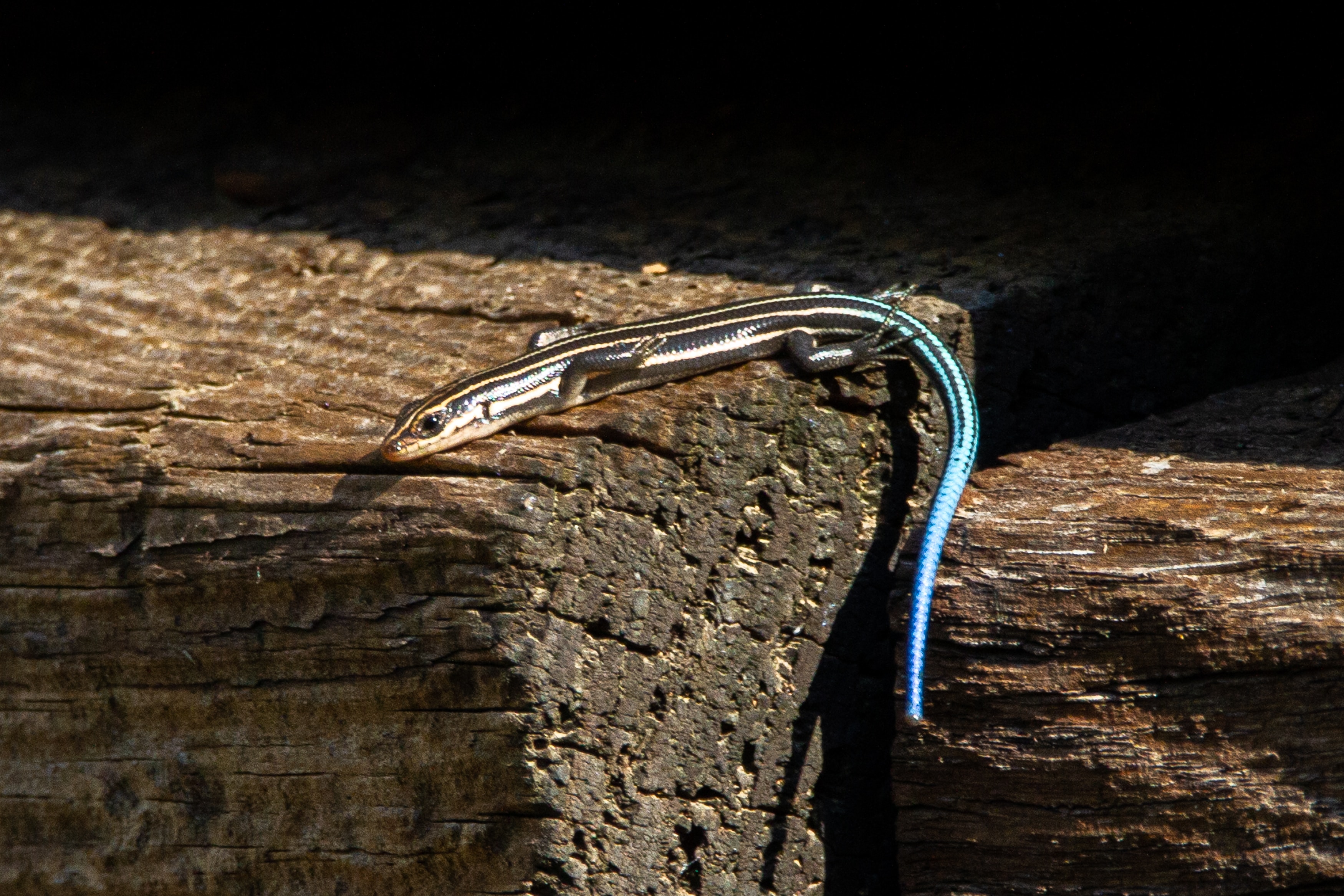 Photo by Joshua J. Cotten on Unsplash
Photo by Joshua J. Cotten on UnsplashWhen you have a skinks as pets, you need to know about their sleep patterns, which are largely dictated by whether they are nocturnal or diurnal.
Monkey-tailed skinks and red-eye crocodile skinks, for example, are nocturnal, meaning they are active during the night and sleep during the day.
This is a crucial aspect to consider when setting up their habitat, as they will need a more subdued environment during the day, with dim lighting and quiet spaces to sleep undisturbed.
Observing these species can be particularly intriguing because they are at their most active in the evening, which can give owners a different experience than with diurnal skinks.
On the other hand, most other skink species, including the popular blue-tongued skink, are diurnal, meaning they are active during the day and sleep at night.
This makes them an ideal choice for pet owners who want to interact with their pets during the daytime.
Diurnal skinks will bask under the light, forage, and explore their environments during the day, then retreat to a secure hiding spot at night to rest.
Their sleep is typically a peaceful, low-energy period, during which they remain still and hidden from potential predators.
Understanding these sleep habits is essential when caring for skinks as pets.
For nocturnal species, owners should provide a nighttime setting that mimics their natural habitat—dim lighting, quiet surroundings, and a comfortable place to rest.
Conversely, diurnal skinks need plenty of daylight and a comfortable basking spot to soak up the warmth and energy they require during their waking hours.
Keeping their sleep patterns in mind ensures they are not only comfortable but also healthy and stress-free.
Size
Blue-tongued
18 inches or more
Blue-tailed
4-8 inches
Fire
15 inches
Monkey-Tailed
32 inches
Ocellated
1.5 to 10 inches
Red-Eyed Crocodile
8-10 inches
Schneider’s
18 inches
Temperature and Humidity For Different Types of Skinks As Pets
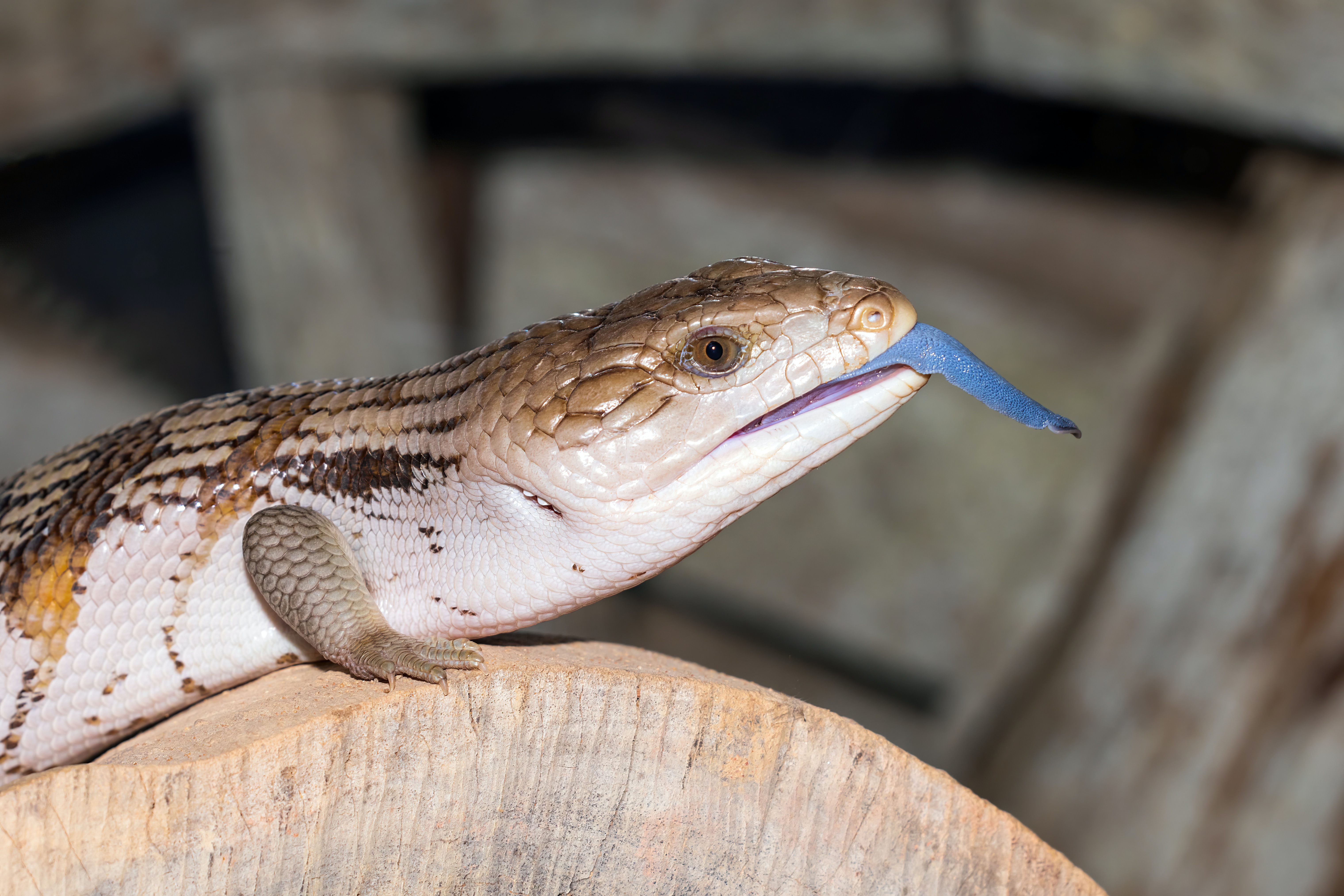 Photo by David Clode https://unsplash.com/photos/a-lizard-with-a-long-beak-droNi2hNjd0
Photo by David Clode https://unsplash.com/photos/a-lizard-with-a-long-beak-droNi2hNjd0Blue-tongued
The basking area can go up to 105 degrees F (40 C).
The cool side of the tank should be 70-75 degrees F (21-24 C) during the day, and the warm side should be 85-95 degrees (29-35 C).
The temperature should never drop below 70 degrees F (21 C).
You would need to get information from the former owner or the rescue place you get your skink from regarding the humidity they need.
Blue-tongued skinks from different areas of the world have different humidity needs.
Blue-tailed
They like a hot temperature up to 95 degrees F (35 C), with most of the cage at a temperature of 75-80 degrees (24-27 C) and a nighttime temperature of 75 degrees F (24 C).
The humidity should be 60-80%.
Fire
80-85 degrees F (27-29 C) on the cool and up to 95 degrees F (35 C) on the warm part of the cage, with part of the cage with humidity at about 60-70%.
Night time temps should not drop below 70 degrees F (21 C).
Monkey-Tailed
These skinks need high humidity - at least 70-80%.
The basking area can go up to 95 degrees F (35 C), the warm area should be between 80-90 degrees F (27-32 C), and the cool part should be mid 70s F (24 C).
Ocellated
Ocellated skinks like it hot!
90-100 degrees F (32-38 C) should be the temperature for their basking area and not less than 75 degrees F (24 C) on the cool side.
They like the humidity to be very low during the day at 15-35% and then really high at night - 90-100%.
Red-Eyed Crocodile
These skinks also like really high humidity.
The humidity should never be less than 70%, and during the day it should be 90-100%.
Their basking spot only needs to get up to the low 80s F (27 C) and the cool area of the cage should be around 75 degrees F (24 C).
Schneider’s
Their basking surface temperature should be at around 95 degrees F (35 C) and the cool side at least 75 degrees F (24 C).
Night-time temperatures can drop to as low as 65 degrees F (18 C)on the cool side and low seventies on the warm side.
They like it dry, so humidity should be no more than 40%.
Habitat For Different Types of Skinks As Pets
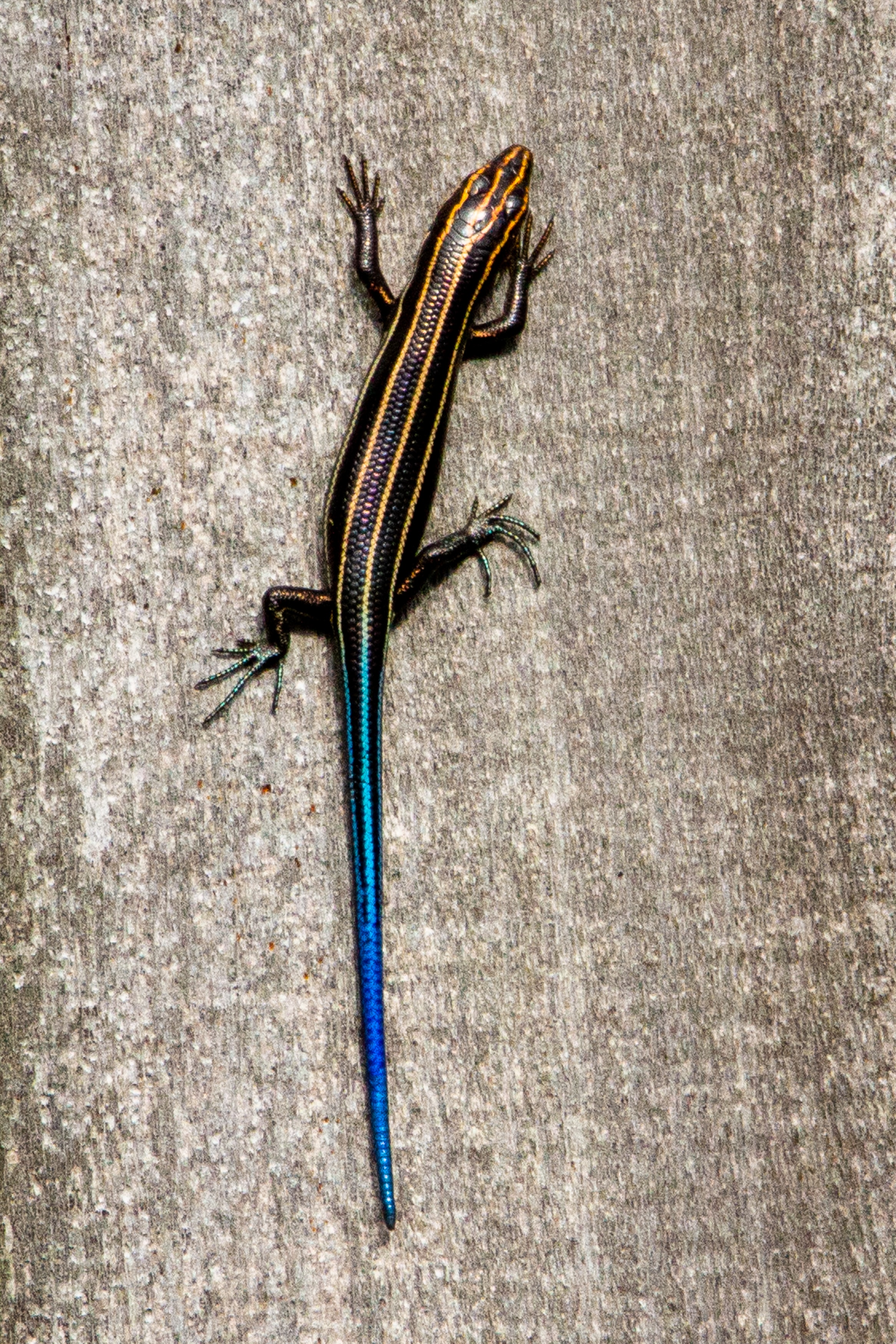 Photo by Joshua J. Cotten https://unsplash.com/photos/black-and-white-lizard-on-gray-concrete-floor-VRbSu5_jaIM
Photo by Joshua J. Cotten https://unsplash.com/photos/black-and-white-lizard-on-gray-concrete-floor-VRbSu5_jaIMBlue-tongued
They should have at least a 40 or 50-gallon tank.
Their enclosure should be at least 3-4 feet long, one and a half to 2 feet wide, and 1-2 feet tall.
They like being on the floor and don’t climb that much.
Plenty of plants branches and logs and places to hide should be provided.
They need 10-12 hours of UV light.
They like to burrow so they would like a deep layer of coconut fiber, mulch, or soil on the bottom of their cage.
Blue-tailed
Have a blue-tailed skink in at least a 40-gallon tank, or one that measures 18x18x24 inches.
They would appreciate a tall cage.
Use UV lighting 12 hours a day.
They are fine living alone, but a few females together with one male would be fine, as long as they all have enough space.
They need plants, branches, and rocks in their enclosure lined with humus, orchid bark or coconut fiber.
Fire
They like to burrow and stay close to the ground, so a tall tank is not necessary.
A 40-gallon tank for one is an OK size, but bigger is always better.
If you have more than one skink, you need to provide a lot more space.
Provide them with rocks and branches and other items to climb and hide around.
The bottom of the cage should be soil so they can burrow.
They need UV light to help prevent bone diseases.
Monkey-Tailed
Monkey-tailed skinks are large and they use their tails to help them climb.
They are really active.
They should have at least a 40-gallon tank or an enclosure that measures at least 5 feet high by 3 feet wide and 6 feet long for one.
To have more than one, the habitat should be much bigger.
They need a tall cage with lots of branches to climb up and other items such as rocks and logs to scurry across.
Also include plants and places to hide.
The bottom of the cage should be soil.
Ocellated
Ocellated skinks should live alone in at least a 20-gallon tank.
They need 10-12 hours of UV lighting.
They prefer a sandy lining on the bottom of their cage with logs, branches, rocks, ledges, places to hide, and some plants.
Red-Eyed Crocodile
You can use a 10-gallon tank for up to two red-eyed crocodile skinks, but any more than that would require at least a 20-gallon tank.
They will need UV lights for 10-12 hours.
You can line their cage with paper towels or soil.
Like all reptiles, they should be able to climb on rocks, branches, and plants
Schneider’s
They like to stay close to the ground, so a tall enclosure is not necessary.
A 40 gallon tank would be good, at least 30 inches long, 12 inches deep and 12 inches high.
They need good quality UV light.
They like sandy soil for the bottom of their cage and have branches, rocks, ledges, plants, and hidies in their cage.
They are sociable animals and would enjoy having other schneider’s sinks asa pet in their cage.
Diet for Different Types of Skinks As Pets
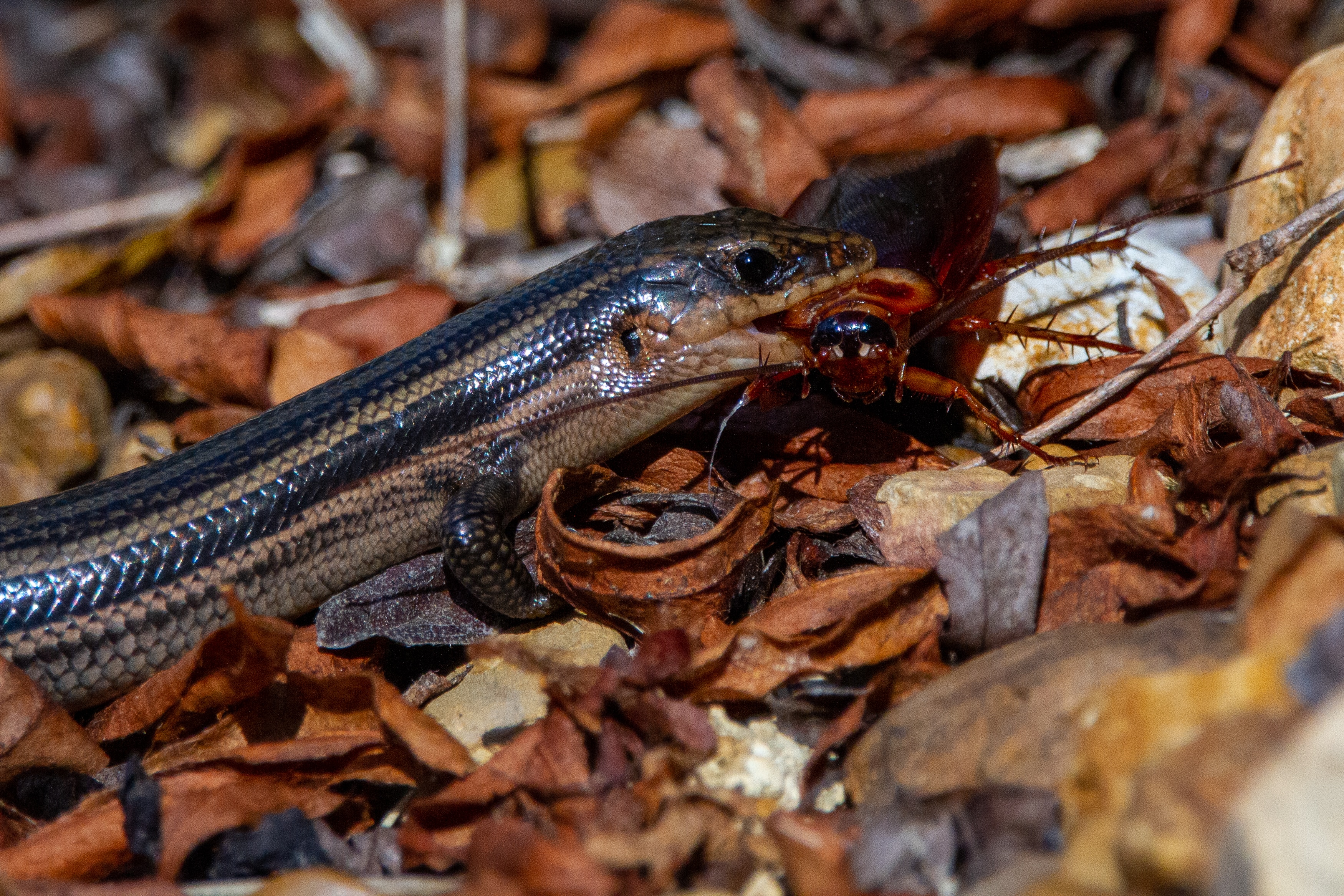 Photo by Joshua J. Cotten https://unsplash.com/photos/a-brown-and-black-snake-laying-on-top-of-leaves-I7S--QvUFZQ
Photo by Joshua J. Cotten https://unsplash.com/photos/a-brown-and-black-snake-laying-on-top-of-leaves-I7S--QvUFZQYou often want the feeding times for skinks as pets to last 5-10 minutes, so you give them as much food as they will eat during that time.
Blue-tongued
Blue-tonged skinks will eat vegetables, flowers, insects, worms, and a small amount of fruit.
They should have 60% plants and 40% insects and worms.
Blue-tailed
They will eat crickets, beetles, flies, grasshoppers, spiders, and worms every few days.
Provide them with a small shallow bowl of water.
Fire
Feed them 3-5 vitamin-dusted insects every three days and put a water bowl in the cage for them to swim in.
Monkey-Tailed
They only eat plants so no insects.
In a pinch, they might eat an insect or two, but they normally eat strictly plants.
Feed them mostly bite-sized vitamin-dusted vegetables with some fruit.
You can give them small amounts every day.
Ocellated
Feed them vitamin-dusted insects, and bits of vegetables and fruit 2-3 times a week and provide them with a shallow small bowl of non-chlorinated water.
Red-Eyed Crocodile
They should be fed vitamin-dusted insects every other day.
Provide a shallow small water dish that they can climb into if they want.
Schneider’s
They will eat insects 2-3 times a week.
They especially like crickets and mealworms, but you can also try small pieces of fruit, vegetables, and hard-boiled egg.
Provide a shallow small water dish that they can climb into if they want.
Lifespan and Health
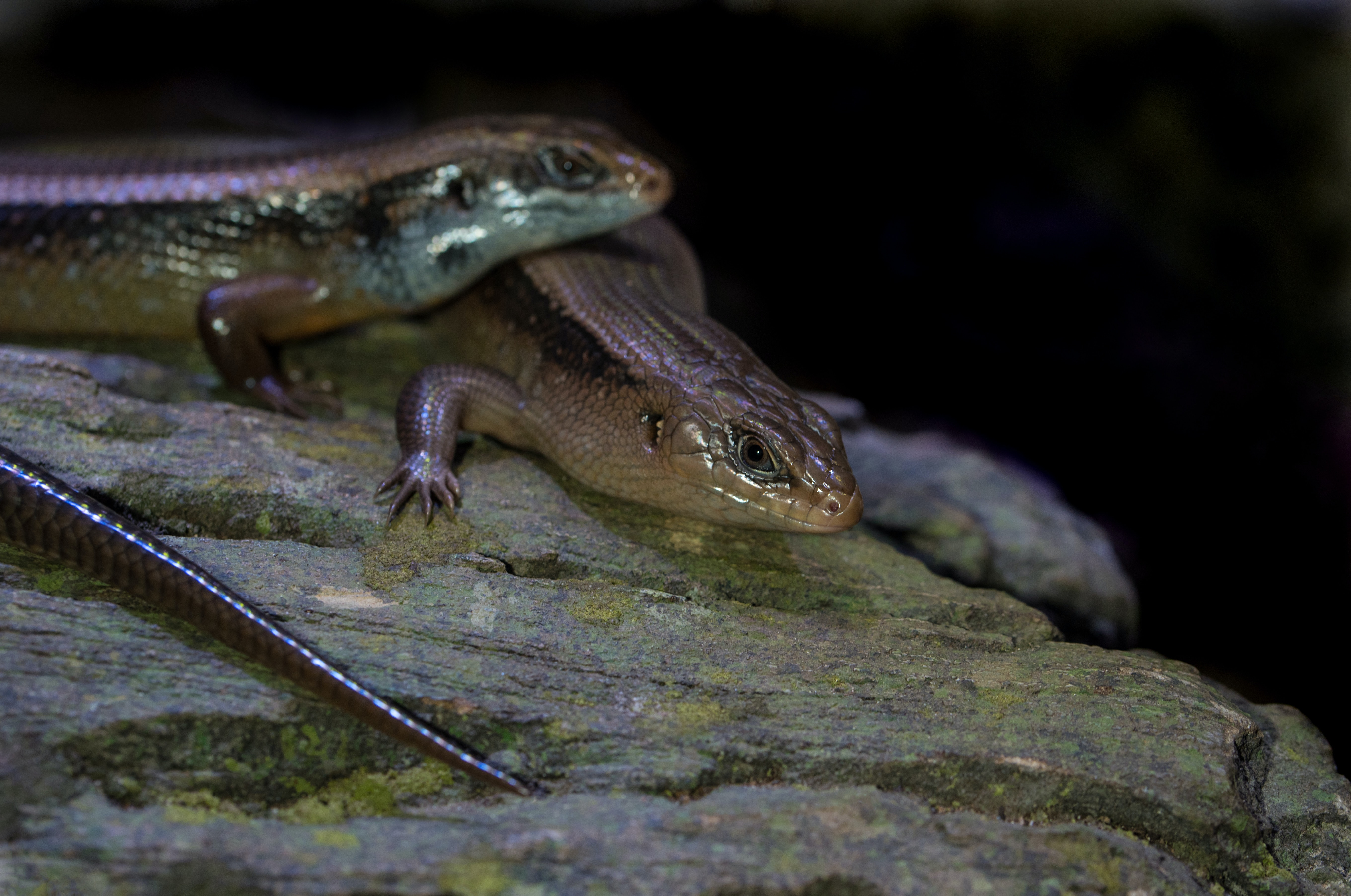 Photo by David Clode https://unsplash.com/photos/photo-of-brown-lizard-TIpGsHya0M8
Photo by David Clode https://unsplash.com/photos/photo-of-brown-lizard-TIpGsHya0M8Like all pet reptiles, skinks as pets may have a bone disease related to vitamin D deficiency, parasites, mites, respiratory problems, and mouth rot disease.
They also might have obstructions in the digestive system because of swallowing substrate.
Signs of illness include decreased activity, loss of appetite, weight loss, difficulty breathing, swollen limbs, discoloration, a change in poops or urination, visible signs of parasites or skin problems
Blue-tongued
20 years
Blue-tailed
6-10 years
Fire
15 years
Monkey-Tailed
30 years
Ocellated
30 years
Red-Eyed Crocodile
10 years
Schneider’s
20 years



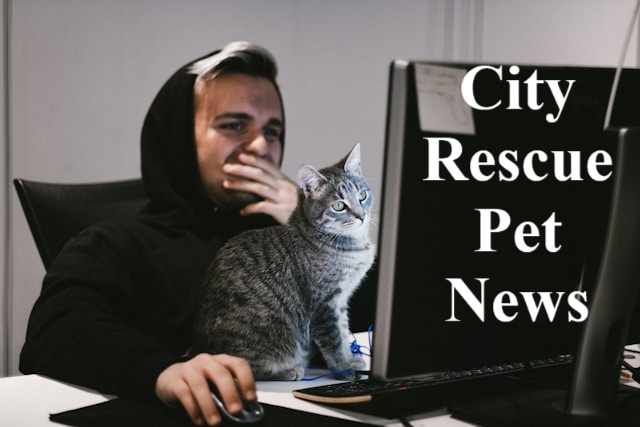



New! Comments
Have your say about what you just read! Leave me a comment in the box below.